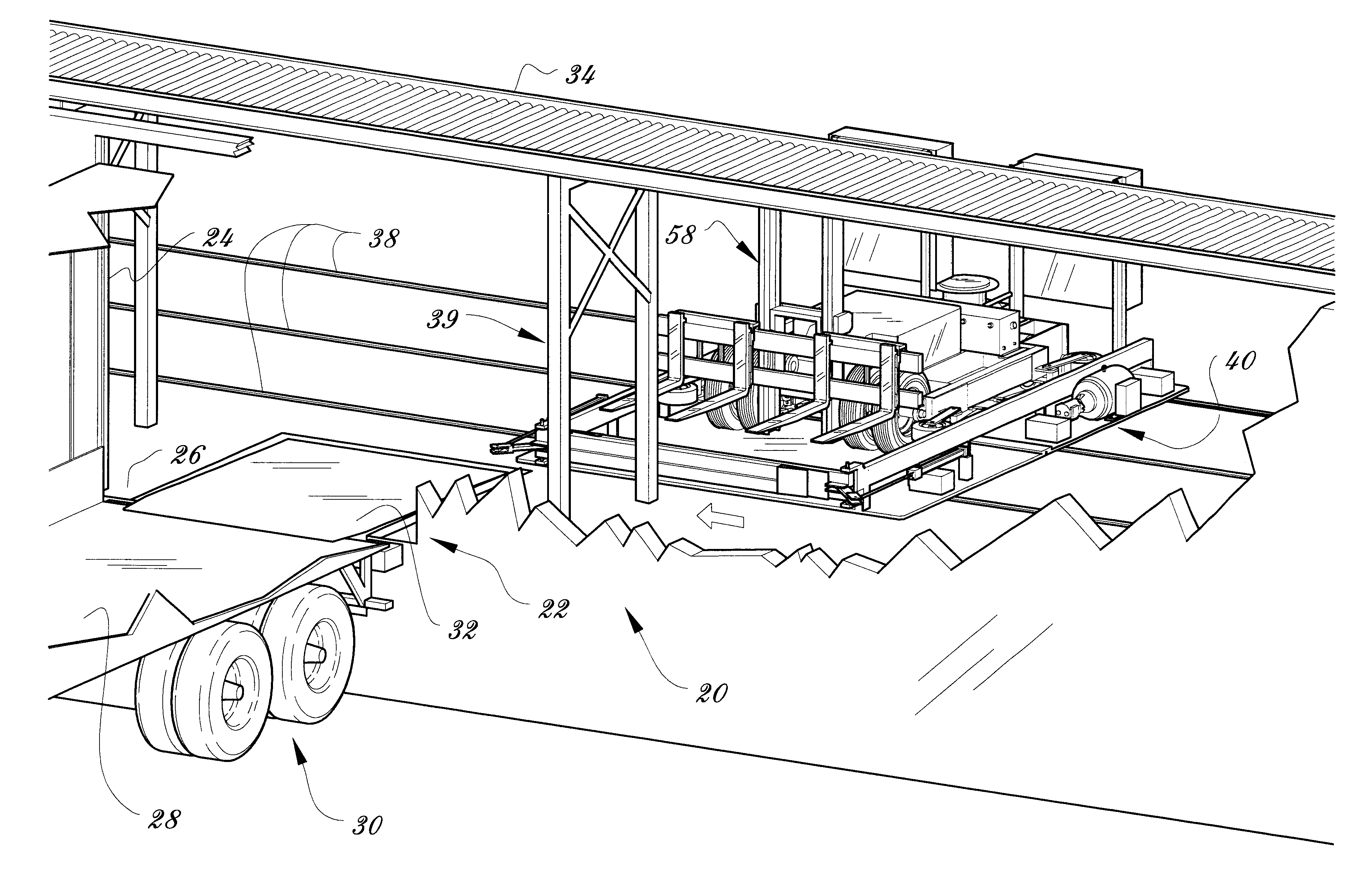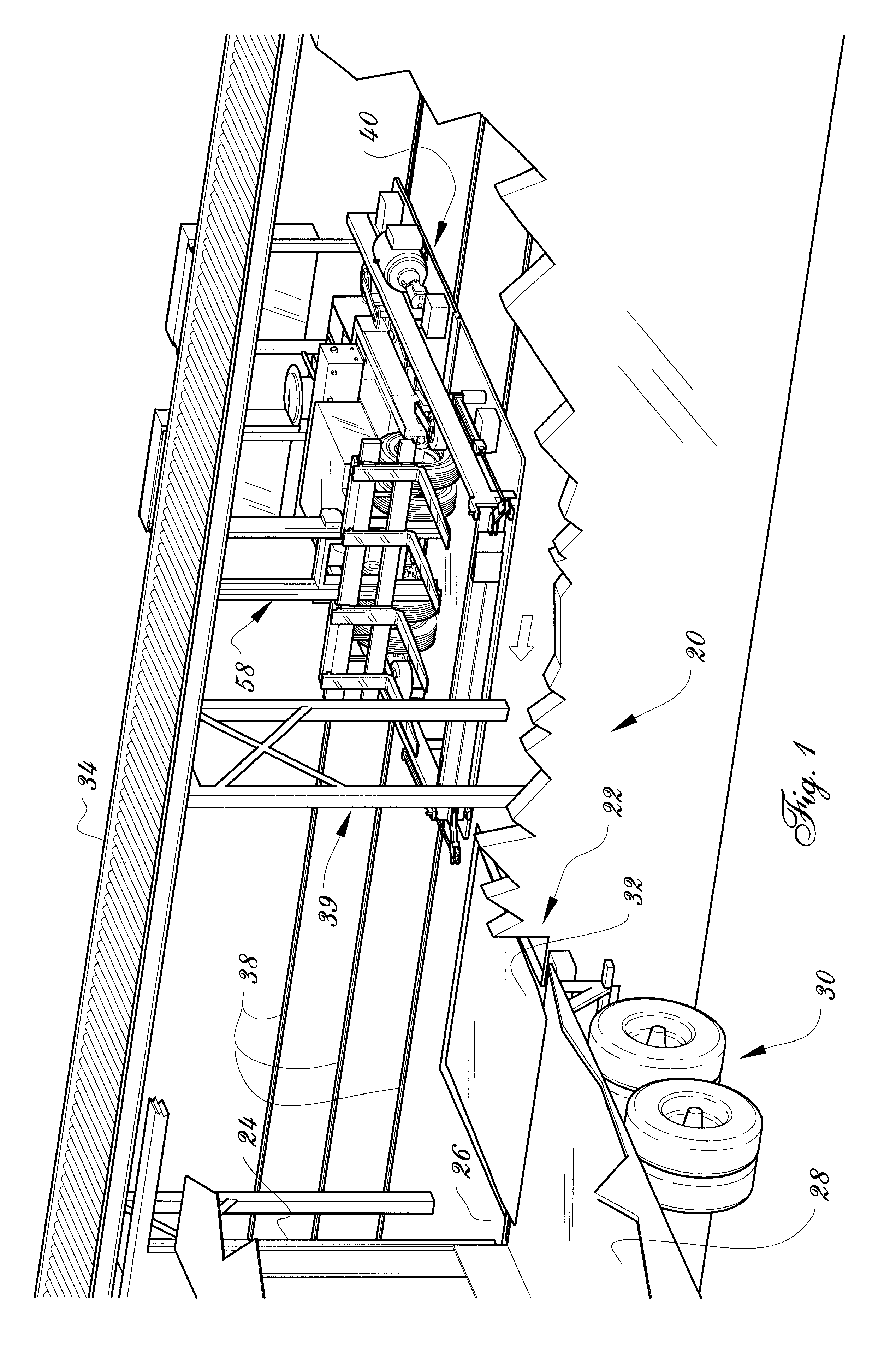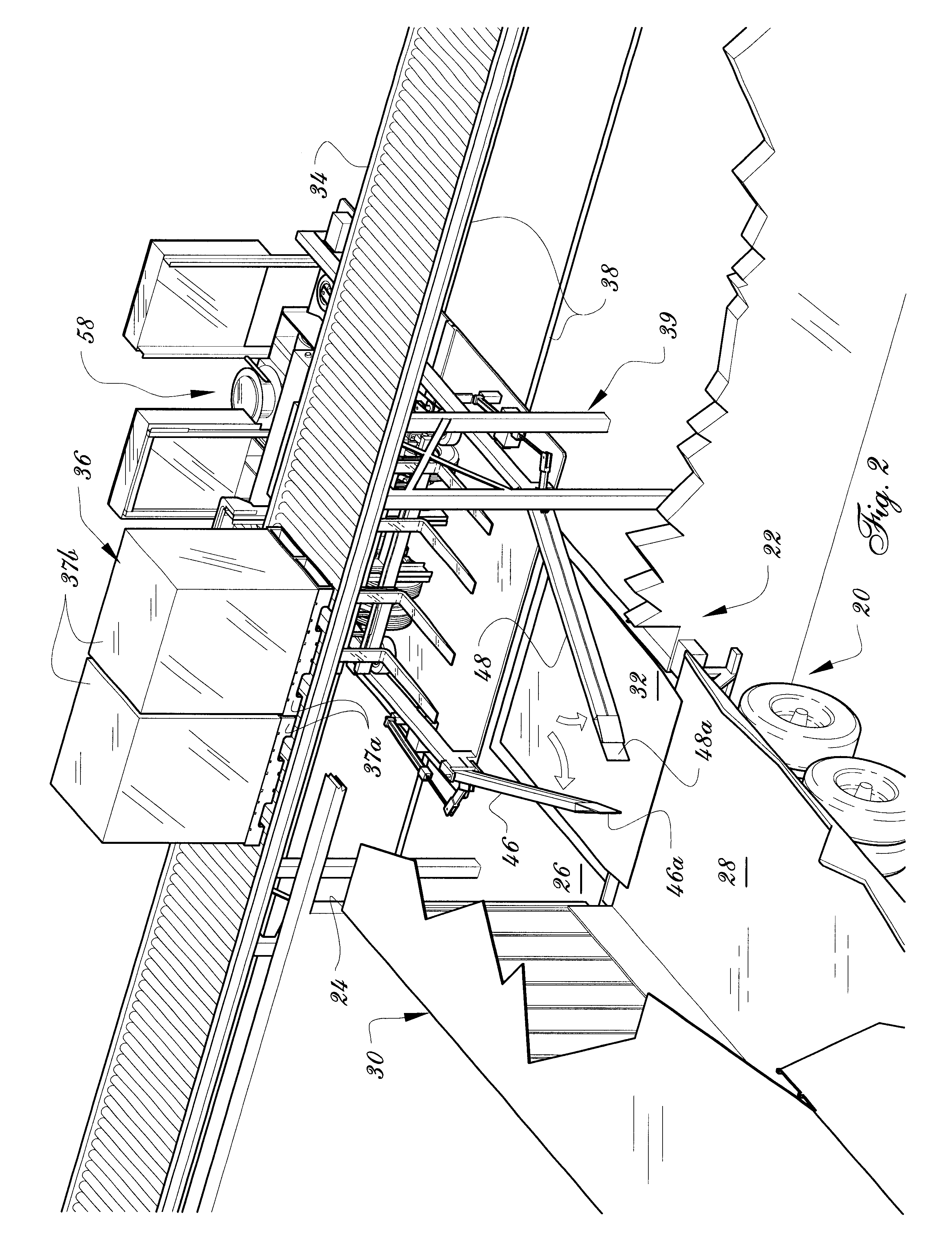Vehicle loading and unloading system
a technology for loading and unloading systems and vehicles, which is applied in the direction of non-vehicle mounted steering controls, refuse gathering, transportation and packaging, etc., can solve the problems of wasting economic value space inside the semi-trailer, rail-guided carriages have the disadvantage of requiring a flawless alignment of the truck, and it is difficult to efficiently load semi-trailers with palletized articles
- Summary
- Abstract
- Description
- Claims
- Application Information
AI Technical Summary
Benefits of technology
Problems solved by technology
Method used
Image
Examples
Embodiment Construction
FIG. 1 shows a loading station 20 including a loading dock 22 defined by an opening 24 in a wall of a building and a floor portion 26 which is substantially at a same height as the flooring 28 of a semi-trailer 30 which registers with loading station 20. As known in the art, a pivotable panel 32 hingedly attached to dock floor 26 bridges the dock floor 26 and the semi-trailer floor 28 and acts as a ramp to compensate any vertical offset between dock floor 26 and semi-trailer floor 28.
In the description hereinafter, reference will be made to the loading of articles into semi-trailer 30, although it is understood that the unloading of articles therefrom could be accomplished by reversing the steps accomplished to load the semi-trailer 30. Also, although a semi-trailer conventionally used with a truck is shown, it is understood that loading and unloading of articles with the system according to the present invention could be accomplished onto other vehicles or machinery having a simila...
PUM
 Login to View More
Login to View More Abstract
Description
Claims
Application Information
 Login to View More
Login to View More - R&D
- Intellectual Property
- Life Sciences
- Materials
- Tech Scout
- Unparalleled Data Quality
- Higher Quality Content
- 60% Fewer Hallucinations
Browse by: Latest US Patents, China's latest patents, Technical Efficacy Thesaurus, Application Domain, Technology Topic, Popular Technical Reports.
© 2025 PatSnap. All rights reserved.Legal|Privacy policy|Modern Slavery Act Transparency Statement|Sitemap|About US| Contact US: help@patsnap.com



